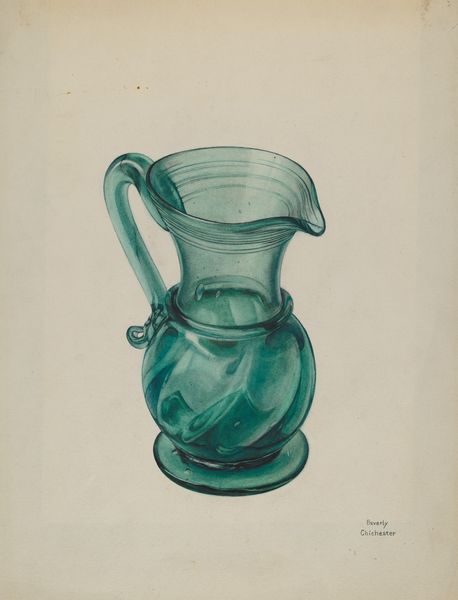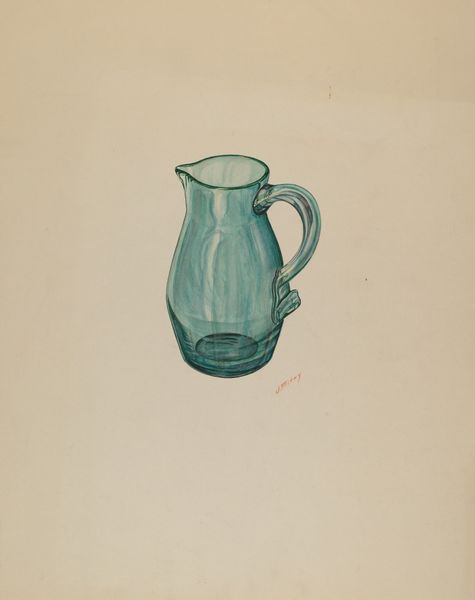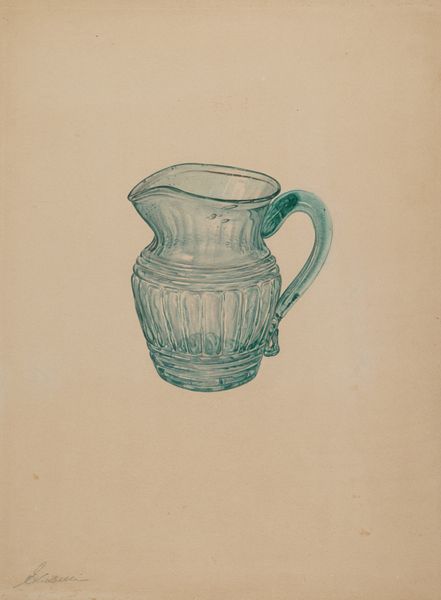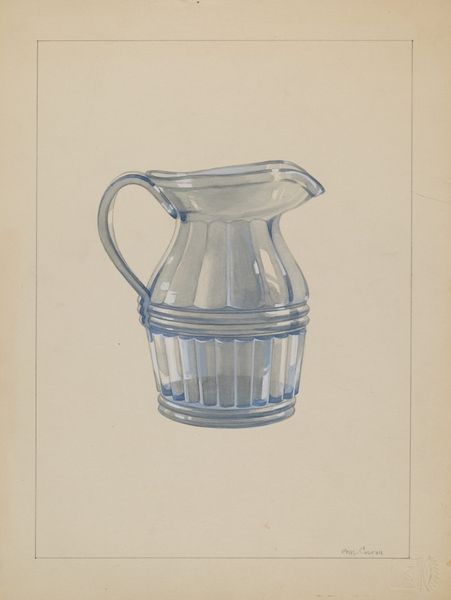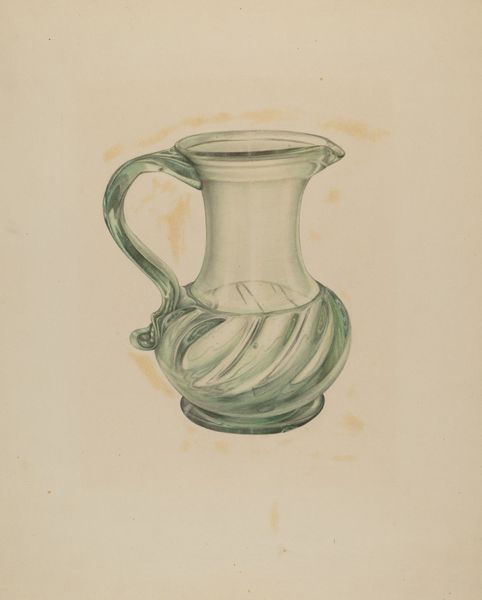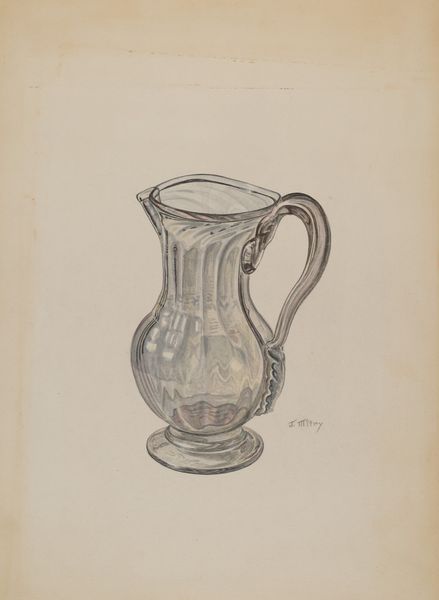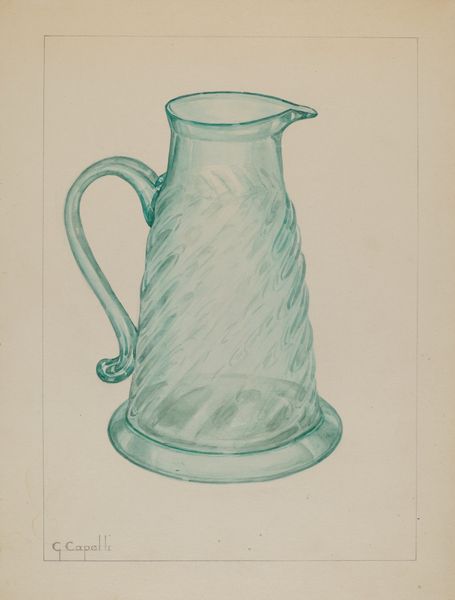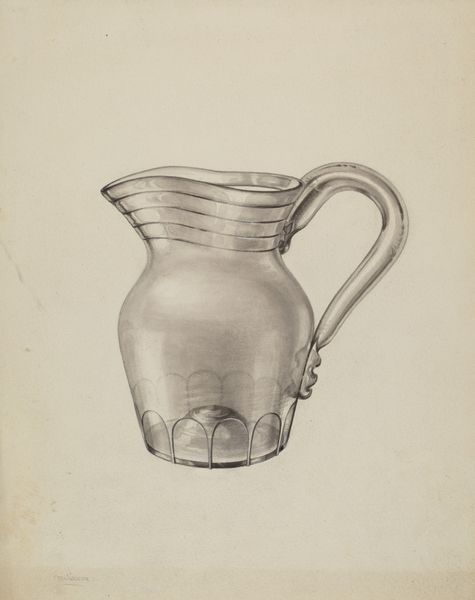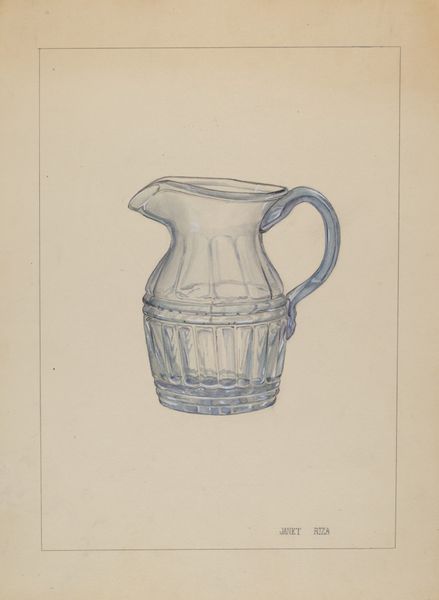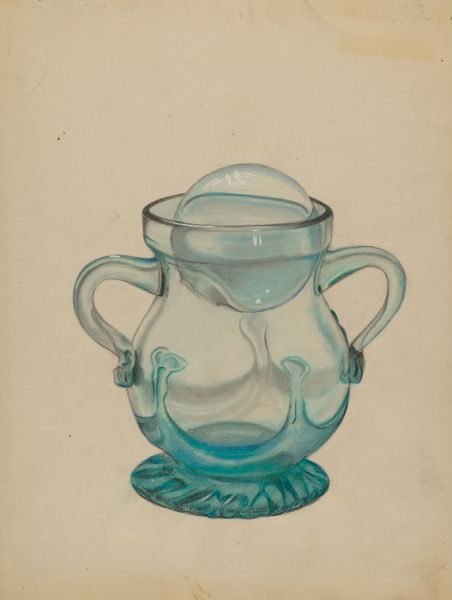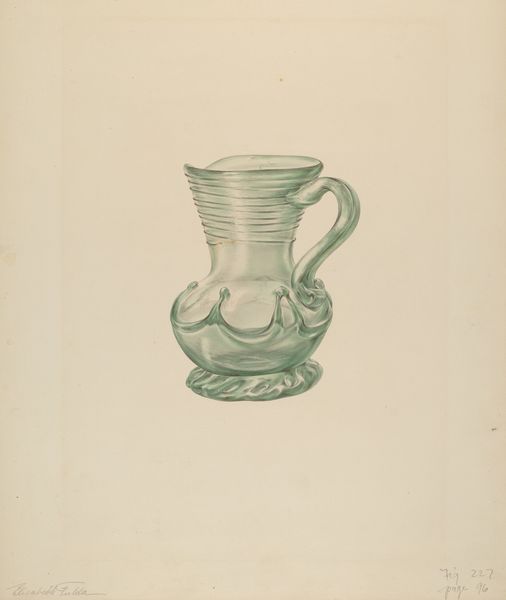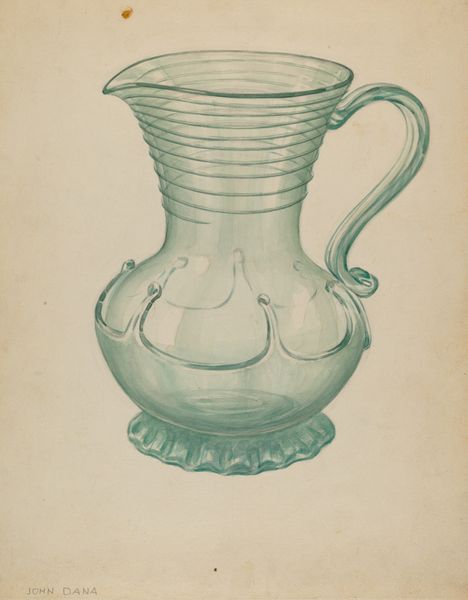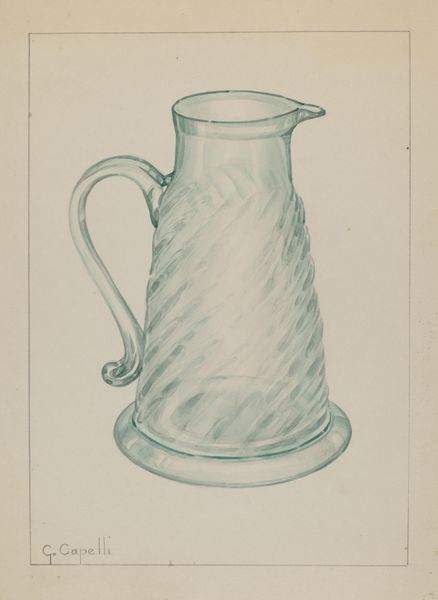
drawing, watercolor
#
drawing
#
watercolor
#
intimism
#
geometric
#
watercolor
Dimensions: overall: 29 x 22.6 cm (11 7/16 x 8 7/8 in.)
Copyright: National Gallery of Art: CC0 1.0
Curator: Welcome. Today, we're looking at "Creamer," a watercolor and drawing piece by Giacinto Capelli, dating circa 1937. Editor: It has a rather understated charm, doesn’t it? Simple, quiet, and domestic. Almost like a memory faded at the edges. Curator: Intimism indeed played a key role at that time; representing everyday, often interior, subjects. This unassuming depiction of a glass creamer intersects with prevailing discourses around domesticity and gender roles, specifically how the labour within domestic settings has historically been feminized. Editor: I’m more drawn to the materiality. Look at the almost ethereal quality achieved with watercolor. Capelli’s skillful application makes the glass seem to glow from within. We should not oversee the significance of making in this period, since crafting, especially glassmaking, had unique industrial structures that dictated social patterns. Curator: Precisely. Notice the strategic rendering of light and shadow. How these intersect to emphasize the fragility and translucence of the glass itself. I see Capelli commenting on the bourgeoisie values of the period—a desire for transparent governance. The glass creamer thus functions as a lens onto class and power. Editor: Perhaps. For me, it highlights the everyday object, almost lifting it up for consideration and, consequently, questioning the role of artisans in that society. After all, Capelli himself was concerned with class and production. He used watercolor’s ephemeral quality to comment on the state of modern labor as a reaction against the mechanization he witnessed. Curator: True, but it also highlights the importance of representation, too. As the art world evolved and matured it began opening its gates to a range of new and unique identities in dialogue. An approach very relevant to today's social structures. Editor: A valuable observation. This artwork helps consider the production chain, from the source of material through to its usage, ultimately offering valuable information for those interested in the period. Curator: By studying the cultural contexts within these subjects of our shared histories, we become more aware of our shared futures. Editor: Indeed. Capelli’s work serves as a wonderful intersection of skill, social context and materiality.
Comments
No comments
Be the first to comment and join the conversation on the ultimate creative platform.
